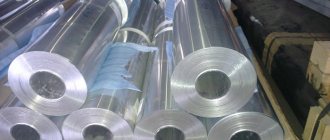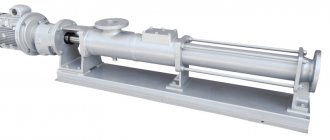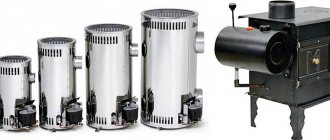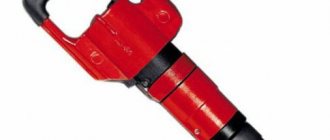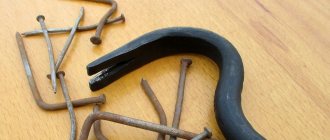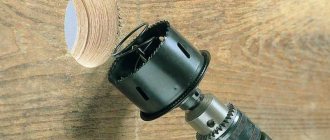Solid minerals, building materials, chemical raw materials, abrasive materials, solid secondary raw materials, and some types of plant materials are subjected to crushing. Among all types of raw materials that undergo crushing, ores of ferrous and non-ferrous metals and non-metallic minerals (coal, granites, limestones) dominate. According to a rough estimate, 2.5 - 3 billion tons of solid raw materials are crushed annually in the world.
Obviously, it is necessary to crush solid raw materials to obtain pieces of smaller size from it compared to the original material, since initially this material, for example, ore mined in a quarry, can be very large - with pieces up to 1-1.5 m in size.
Crushing operations, as a rule, are used in conjunction with the processes of classification by size (screening) of solid raw materials.
Crushing operations, like other disintegration methods, are used mainly to solve the following problems:
- To consistently reduce the size of minerals to sizes of 3-15 mm before operations of fine grinding and beneficiation of minerals.
- To obtain raw materials of the size required by direct consumers, for example, in the production of building crushed stone, abrasive materials, as well as in the preparation of solid fuels and metallurgical charge components.
- To prepare solid industrial and household waste for deep processing operations into secondary products.
- The crushing process is carried out using special machines - crushers. Material is destroyed in crushers as a result of the application of compression, shear, impact, or a combination of these forces.
Historical reference
Since ancient times, crushing stones and other hard materials was done manually - first, large blocks were split with picks, then smaller ones were crushed with a hammer tool. The first attempts to mechanize the process date back to the late Middle Ages. They are piles covered with metal, suspended on cables and driven by the force of the river current.
With the advent of the era of steam engines, the first full-fledged stone crushers appeared, similar in principle to modern ones. In them, metal platforms, rolls or other working elements exerted pressure on the material until it crumbled into pieces.
Design and use of cheek cheeks
Jaw-type stone crushers are found in all crushing classes and can be used to crush any materials. Such machines operate on the principle of compression - a movable jaw presses the source material against a beveled stationary surface, forming a wedge-shaped chamber.
After crushing the primary boulders, their parts fall lower under the influence of gravity, where they are again compressed and crumble into even finer fractions.
Among jaw crushers, there are devices with simple and complex jaw movements. The former are more reliable and durable, while the latter provide a more uniform structure of the finished material.
In general, the proportion of flake particles in the product of jaw crushers is quite high, and the size of the granules can vary widely. Therefore, they are recommended only for rough crushing, when productivity and technological simplicity are more important than quality characteristics.
Design
Despite the variety of design features, most jaw crushers use designs that were developed more than a hundred years ago.
The main regulatory document relevant for this equipment is the interstate standard that is still in force, adopted in 1993 - GOST 27412-93. The standard jaw crusher model includes the following main components:
- Bed . It is a cast base on which all other parts and mechanisms are installed. The frame has a reinforced design and significant weight, since the safety of the crusher depends on its stability and reliability.
- Crushing chamber. It is formed by two crushing plates (cheeks) and has a wedge shape. One of the surfaces is fixedly fixed, the second is placed on the connecting rod and together with it carries out a reciprocating (swinging) movement in the vertical direction. The movable “cheek” is designed so that it is possible to adjust the position of its lower edge in the horizontal plane and set the maximum size of crushed pieces at the exit.
- Eccentric shaft . Transfers energy from the power drive to the movable “cheek” and converts rotational motion into reciprocating motion. The main shaft contains a connecting rod, a pulley and a flywheel.
- Drive unit . It includes an electric motor and a drive pulley connected to it through a coupling, which is fixed to the shaft and transmits torque to the driven one.
- Control system . Ensures the execution of all basic commands: step start, emergency shutdown, activation of protective relays (during overload, overheating, etc.), operation of a pre-start alarm, and more.
Features of cone crushers
The main working body of cone crushers is a cone pestle rotating inside a metal cap. The axis of rotation of the cone does not coincide with its geometric axis, due to which a beating effect occurs - the stones poured into the cap are pressed by the side surfaces of the pestle to its sides, abraded and crushed against them.
The grinding process occurs in several stages, because, as in a jaw crusher, small particles do not immediately fall down, but slowly move along the working surfaces, being crushed more and more.
Cone crushers provide better and more uniform grinding of materials than jaw crushers, but the difference in the sizes of the initial and final fractions is not so great.
In addition, such devices wear out faster, because the eccentric design of the working body causes additional loads on the bearings of its axis, and the contact surfaces are subject to axial scratch damage.
Operating principle of crushing and screening plant
Each tool does its job. At the first stage, the excavator loads rock mass or construction waste into the receiving hopper. The apron feeder transfers the material to the crusher. The process then goes through the following steps:
- the crushed product falls onto the conveyor belt;
- delivered to the funnel;
- falls onto the feed belt;
- loaded into vibrating screen;
- falls on a vibrating sieve, where it is selected;
- a suitable fraction is poured into the bunker;
- large parts remaining above the grate are transferred to the cone crusher;
- transfer of crushed material to the conveyor;
- feeding the product into the funnel;
- loaded into vibrating screen;
- the screening procedure is repeated.
Finished products can be unloaded using dump conveyors directly at the warehouse or loaded into the back of a car. If it is necessary to wash the raw mass, after grinding it passes through conveyors to the classifier.
Rotary
The operating principle of an impact crusher is based on the rotation of a rotor equipped with steel blades (beaters) inside a tapering annular chamber. The blades, colliding with stones, either immediately crush them or throw them onto the impact surface.
Each particle hits different surfaces multiple times at different accelerations, resulting in uniform, although not too rapid, fragmentation.
The main area of application of rotary crushers is the procurement of construction raw materials of low hardness. With their help, you can obtain a high-quality and uniform product. The main disadvantage of this design is the low durability of the beaters.
Types of home grain crushers
All commercially available grain grinders are divided into household and industrial units. The main differences between them are power, performance and size. The home grain crusher is small in size and suitable for short-term use. Powerful industrial equipment designed for continuous use for several hours.
Based on the type of cutting elements and grinding principle, crushers are divided into:
- rotary - this equipment is used in most farms. It is equipped with durable metal knives that move and hit the steel walls of the housing, thereby grinding the poured grain into flour. A rotary crusher is capable of crushing large portions of grain with a minimum of waste;
- hammer – these units are simple and do not require regular maintenance. Even a beginner can repair them and install new spare parts. The hammer grain crusher is equipped with knives securely mounted on the built-in rotor;
- roller - factory equipment of this type is used for crushing and simultaneous grinding of various grain crops. A standard roller crusher is equipped with rollers that thoroughly process wet grain;
- disk – cutting metal knives in the proprietary design of these units are attached to the discs. Thanks to this arrangement, the disk chopper can be actively used for regular processing of harvested corn.
Shredders are also divided according to the type of built-in drive. The manual crusher is used only in small private farms or where there is no electricity. The electric dry grain grinder is the most popular on the agricultural equipment market.
Roller
Roller stone crushers combine pressure loads with cutting loads. The multidirectional movement of their drums, equipped with sharp teeth, pulls the primary material inside, where it is subjected to strong compression and axial abrasion, as well as multiple impacts on the cutting edges.
Due to their low cost, open design, ease of maintenance and repair, roller crushers are very popular in small industries. They are quite effective and provide high product homogeneity, but are prone to rapid wear.
In some cases, the area of the teeth is increased, and their edges are not sharpened. This reduces the productivity of the crusher, but increases its resource and makes it possible to work with more durable rocks and substances.
Specifications
| Parameter name | Meaning |
| Productivity, t/h: | 30 |
| Size of loaded material (no more), mm: | 250 |
| Crushing roller rotation speed, rpm: | 60 |
| Crushing fraction (no more), mm: | 40 |
| Electric motor power, kW: | 11 |
| Electric motor rotation speed, rpm: | 1000 |
| Electric motor voltage, V: | 220-380 |
| Overall dimensions (no more), mm: | |
| length: | 2550 |
| width: | 1755 |
| height: | 910 |
| Crusher weight, kg: | 1500 |
- Product
- Characteristics
Hammer
The action of hammer stone crushers is vaguely similar to the action of rotary crushers - there is also a rapidly rotating drum located inside a closed housing and serves as the basis for placing the working parts.
But in hammer-type crushers, their role is played not by beaters, but by heavy steel plates arranged asymmetrically in several rows. They alternately strike the primary particles, breaking them into smaller ones.
Hammer-type stone crushers are quite rare, since, despite their high productivity, they are not able to work even with medium-hard rocks due to rapid wear. Their use is justified only when it is necessary to quickly crumble soft material into homogeneous granules.
You might be interested in:
Corn crusher: quickly separates the grain from the cob
John Deere tractors are equipped with a “field laboratory” for applying fertilizers
New version of the Cat R2900 underground loader
Crawler bulldozer: how to choose reliable equipment
What types of tractors are there: photos, classification and types
Choosing a device for home and professional use
When choosing a specific stone crusher model, it is important to know not only the required productivity and the nuances of the granulometry of the equipment, but also to navigate the physical properties of the materials with which you will have to work.
First of all, we are talking about hardness and abrasiveness indicators. Knowing these properties, as well as the budget for purchasing equipment, you can decide on the required type of working parts.
Then they start choosing the chassis. If the stone crusher will be installed directly at the site of production of finished goods or semi-finished products from lump raw materials, it is better to give preference to stationary models; in all other cases, it is worth purchasing towed crushers. The use of self-propelled devices is justified only in the mining industry, when the hourly productivity of work is estimated at tens of tons.
We answer questions
How much can a stone crusher cost for a summer cottage?
The cost of crushers varies widely, depending on their type and performance. A household model of the jaw or cone type will cost $200-1500.
What is the best type of stone crusher for limestone and chalk?
Rotary and roller crushers are well suited for rough grinding of these rocks; for fine grinding (production of a powder product), milling equipment can be used.
Can a jaw crusher crush granite?
Household - hardly. But jaw-type industrial equipment can easily cope with such a task.
How to repair knives on drums?
If we are talking about the beaters of rotary crushers, it is easier to replace them; if we are talking about the teeth of roller machines, you can try to align them and sharpen them using a metal file.
Is it possible to make a crusher with your own hands?
Yes, but it is not suitable for crushing stones unless you have the skills of a professional lathe, miller and welder. At home, you can make a crusher for soft lumps of substances, branches, food products - video instructions are attached.

